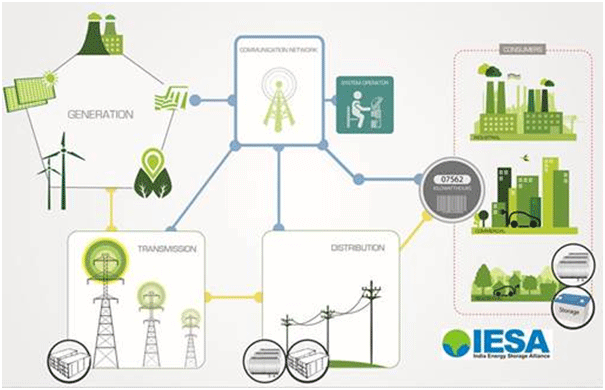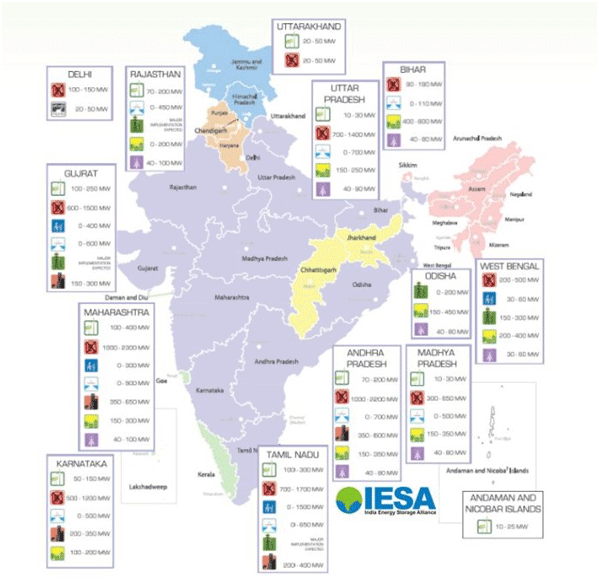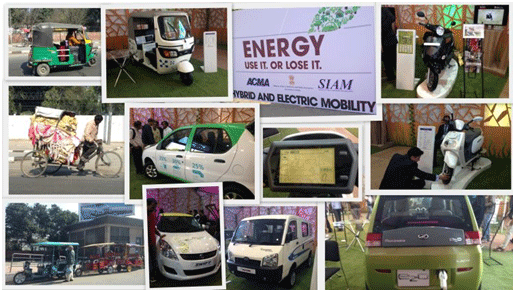In the month of July 2014 there are 2 major announcements by Ministry of New and Renewable Energy (MNRE) andPower Grid Corporation of India Ltd (PGCIL) have opened doors for energy storage deployment for ancillary services and renewable integration in India. Although this is just a beginning, I am excited about the potential of these projects to start a new direction for Indian Electricity Grid.
India has witnessed number of transformations in past 50 years starting with the Green Revolution of 1960s that transformed the agricultural practices in India. In 1970s and 80s, the “White Revolution – Operation Flood” included the world’s biggest dairy development program which transformed India from a milk deficient nation to the largest milk producer in the world within a span of 30 years. The 1990s saw the economic reforms that opened up the Indian economy and led to the telecom and IT revolutions that have made India a leader in the knowledge economy in the 2000s.
Today, India is one of the fastest growing economies in the world, with current electricity generation capacity of ~230 GW to meet the needs of over 1.25 Billion population. India’s per capita annual consumption of energy at ~600 kWh is one of the lowest in the world, even when compared to developing countries like Brazil and China. This is a decade where India needs a clean energy revolution for transforming the electricity infrastructure to provide energy access to over 400 million of households that still lack basic access to electricity.
At the same time India currently boasts a middle class population exceeding 300 Million (almost the size of USA) that is looking for the same level of energy access and power quality that is taken for granted in developed countries through movement towards Green Cities and sustainable living. Also the lack of reliable and quality power supply is a major obstacle for accelerating development of manufacturing and industrial sector in India that is required to maintain 8-10% economic growth for the world’s largest democracy. Consumers bear a large burden due to poor quality and unreliable power supply. Industries maintain diesel powered generators and households have inverters with batteries as backup for unscheduled power cuts, low voltages or variable frequency.
Advanced Energy Storage systems can play a key role in every part of the modern grid in India.
The newly elected government in India has taken number of steps in past couple of months to fast track development of the energy infrastructure and set aggressive targets for continued renewable energy deployments in India. Policy makers have taken some key initiatives that can drive grown of storage & microgrids:
- India is looking for rapid adoption of clean energy technologies with anticipated addition of 30-50 GW of new wind capacity and 20-30 GW of solar capacity by 2020.
- India has various initiatives for providing energy access where government of India provides up to 90% of the capital funding for building microgrids in rural areas with no access to electricity.
- Telecom Regulatory Authority of India has mandated use of renewable power for telecom towers in India that are currently utilizing diesel power as primary source of energy.
These policy initiatives have resulted in tremendous opportunities for integration of energy storage technologies for variety of applications. Advanced energy storage market in India is in its infancy however it carries significant market potential. A recent market assessment by India Energy Storage Alliance (www.indiaesa.info) suggests a potential of 15-20 GW by 2020 in India.
Immediate applications range from telecom tower backups to grid ancillary services and renewable integration. The $300 Million orders during 2013 by Indian Telecom Companies for purchasing Li-Ion batteries for telecom tower backup is a perfect example of the value proposition of the advanced storage technologies, and willingness of Indian businesses to adopt such technologies. Now with the RFPs issued by PGCIL and MNRE similar opportunities will open up for grid scale energy storage deployment.
India has also recently launched a National Mission on Electric Mobility with a target of 6 million electric vehicles (4 million two-wheelers and 2 million four-wheelers) by 2020. For efficient roll out of the EV program, electrical distribution infrastructure upgrades and smarter systems are required which will control/limit simultaneous charging of hundreds of EVs from the same feeder. Beyond just timing the consumption of power, immediate policy level support is required to build enabling infrastructure to integrate the EVs in the electrical network so that these millions of EVs connected to the power system can be leveraged as virtual power plants (VPPs) that can store energy when there is surplus generation and support the grid during moments of deficit. Globally Vehicle to Grid (V2G) technologies are evolving rapidly that can achieve these objectives.
Recent India Auto Expo featured for the 1 time a pavilion dedicated to electric and hybrid vehicles. The key challenge for making this electric mobility possible is the advancement of cost effective energy storage systems. The rapid advancement in technology and the scale provided by growing Indian market coupled with localization potential can help drive down the cost of these emerging technologies.
The India Energy Storage Alliance (IESA) was launched by Customized Energy Solutions in 2012 to promote Energy Storage and Microgrid technologies and their applications in India. To further the growth of awareness about storage and the application of storage to solve electricity system problems, we launched the knowledge Partner Network (IESA KPN) for an open and transparent information exchange. In past 6 months, IESA network has grown rapidly and currently more than 25 members are actively exploring opportunities for energy storage and microgrids. These members include a good mix of energy storage technology providers, power conversion system providers, system integrators, project developers, large users, potential investors as well as research institutions.
IESA is a new initiative, still in infancy, but with the support of all our members and strategic partners from around the world, we are confident that we can play a pivotal role in this energy revolution for India in coming decade. India has a robust manufacturing sector and many innovative entrepreneurs who are looking forward to forge partnerships with leading global technology companies. Such partnership has true potential to not only help solve the energy issues in India, but could make India a manufacturing base that can support needs of the global energy industry.
Send us your suggestions or comments at: contact@indiaesa.info
About Author
Dr. Rahul Walawalkar,
Executive Director, India Energy Storage Alliance &
VP, Emerging Technologies & Markets, Customized Energy Solutions









